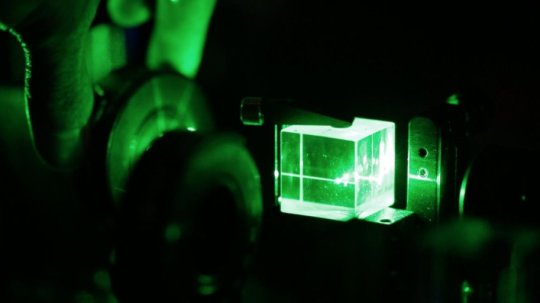
Physicists have produced near-perfect
clones of quantum information using a new method to surpass previous cloning
limits.
Physicists at The Australian National University (ANU) and University of Queensland (UQ) have produced near-perfect clones of quantum information using a new method to surpass previous cloning limits.
A global race is on to use quantum physics for ultra-secure encryption over long distances according to Prof Ping Koy Lam, node director of the ARC Centre of Excellence for Quantum Computation and Communication Technology (CQC2T) at ANU.
The new cloning method uses high performance optical amplifiers to clone light encoded with quantum information -- it is possible this technique could allow quantum encryption to be implemented with existing fibre optic infrastructure.
"One obstacle to sending quantum information is that the quantum state degrades before reaching its destination. Our cloner has many possible applications, and could help overcome this problem to achieve secure long distance communication," said Prof Lam.
The laws of physics -- in particular the 'No Cloning Theorem' -- prevent high quality clones being produced with a 100 percent success rate. The team, led by Prof Lam, uses a probabilistic method to demonstrate that it's possible to produce clones that exceed theoretical quality limits. The method was initially proposed by CQC2T researchers led by Prof Timothy Ralph at UQ.
"Imagine Olympic archers being able to choose the shots that land closest to the target's centre to increase their average score," said Prof Ralph.
"By designing our experiment to have probabilistic outputs, we sometimes 'get lucky' and recover more information than is possible using existing deterministic cloning methods. We use the results closest to a 'bullseye' and discard the rest," he said.
quantum information is that the probabilistic method is permitted, and is useful in many crypto-communication situations, such as generating secret keys.
"Our probabilistic cloning method generates higher quality quantum clones than have ever been made before, with a success rate of about 5 percent. We can now create up to five clones of a single quantum state," said lead author Jing Yan Haw, ANU PhD researcher.
"We first encode information onto a light beam. Because this information is in a fragile quantum state, it is difficult to observe or measure," said Haw.
"At the heart of the demonstration is a 'noiseless optical amplifier'. When the amplification is good enough, we can then split a light beam into clones. 'Amplify-then-split' allows us to clone the light beam with minimal distortion, so that it can still be read with exquisite precision," said Prof Ralph.
Quantum cloning opens up important experimental possibilities as well as having applications in ultra-secure long distance quantum networks.
"One of the problems with quantum encryption is its limited communication range. We hope this technology could be used to extend the range of communication, and one day lead to impenetrable privacy between two communicating parties," said Prof Lam.
This latest achievement follows the success of fellow CQC2T researchers at ANU, who last month were the first to demonstrate self-stabilising stationary light.

 Previous page
Previous page Back to top
Back to top







